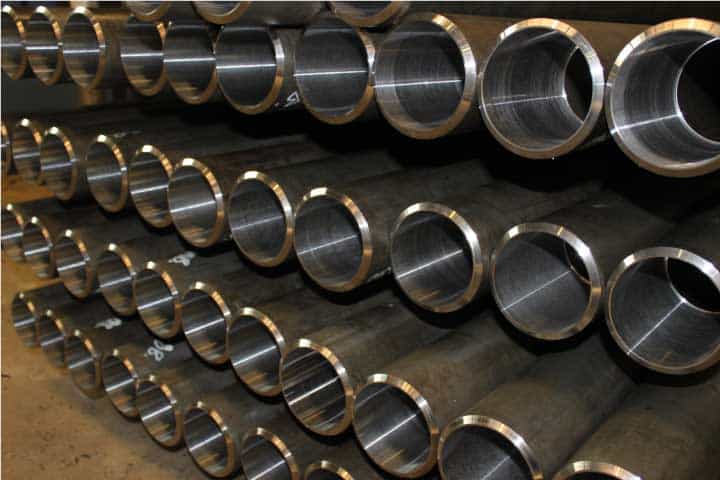What is RC Drilling?
-
What is RC Drilling?
Reverse circulation drilling is one of the post popular methods of mineral exploration drilling. Born in Australia, we’re going to look through and give you an introduction to RC drilling.
Here’s what we’ll be covering:
- The Basics of Reverse Circulation Drilling
- The Cost of RC Drilling
- Reverse Circulation Drill Rigs
- How Does RC Drilling Work?
- RC Drill Rod Suppliers
The Basics of Reverse Circulation Drilling
Reverse Circulation drilling, or RC drilling, uses rods with inner and outer tubes, the drill cuttings are returned to surface inside the rods. The drilling mechanism is a pneumatic reciprocating piston known as a hammer driving a tungsten-steel drill bit.The Cost of RC Drilling
Reverse Circulation drilling can be among the cheapest forms of surface drilling. For more information on the true cost of RC drilling you can read more here!.
In geneal, RC drilling is slower and costlier but achieves better penetration than RAB or air core drilling; it is cheaper than diamond coring and is thus preferred for most mineral exploration work.

Reverse Circulation Drill Rigs
RC drilling utilises much larger rigs and machinery and depths of up to 500 metres are routinely achieved. RC drilling ideally produces dry rock chips, as large air compressors dry the rock out ahead of the advancing drill bit.
How Does RC Drilling Work?
The Method
Reverse circulation is achieved by blowing air down the annulus of the rod, the differential pressure creating air lift of the water and cuttings up the inner tube which is inside each rod. It reaches the deflector box at the top of the drill string then moves through a sample hose which is attached to the top of the cyclone.
Internal Workings
The drill cuttings travel around the inside of the cyclone until they fall through an opening at the bottom and are collected in a sample bag. For any drill hole there will be a large number of sample bags, each one marked to record the location and drilling depth that the sample was obtained.
Assays
The collected series of sample bag cuttings are later taken for analysis to determine the mineral composition of the drill hole. The analysis results of each individual bag represents the mineral composition at a particular sample point in the drill hole. Geologists can then survey the drilled ground analysis and make decisions about the value of the overall mineral deposit.
Reverse Circulation Drill Rod Suppliers
For the supply of RC drilling rods and equipment please visit our sponsors, Harlsan Industries at www.harlsan.com.au
-
RC Drilling Rods
RC drill rods have an outer & inner tube with a sealing system (usually “O” Rings or custom made urethane seals) to keep the drill string pressurised. As rods are subjected to high wear in the drilling process only the highest quality hardened alloy steel is used for the tool joints. These higher quality RC drill rods are manufactured by specialists like Harlsan in Australia.
RC Drill Pipe Sizes
The most commonly used sizes for RC Hammer are 4” and 4 ½”inches. RC Hammers have round metal ‘buttons’ that protrude from the bit, which are required to drill through rock and shale. As the buttons wear down, drilling becomes slower and the rod string can potentially become bogged in the hole.
This is a problem as trying to recover the rods may take hours and in some cases weeks. The rods and drill bits themselves are very expensive, often resulting in great cost to drilling companies when equipment is lost down the hole.
Looking for the cost of RC drilling? Click here!
Most companies will regularly ‘sharpen’ the buttons on their drill bits in order to prevent this, and to speed up progress. Usually, when something is lost (breaks off) in the hole, it is not the drill string, but rather from the bit, hammer, or stabiliser to the bottom of the drill string (bit).
This is usually caused by a blunt bit getting stuck in fresh rock, over-stressed metal, or a fresh drill bit getting stuck in a part of the hole that is too small, due to having used a bit that has worn to smaller than the desired hole diameter.
Although RC drilling is air-powered, water is also used, to reduce dust, keep the drill bit cool, and assist in pushing cutting back upwards, but also when collaring a new hole.
A mud called liqui-pol is mixed with water and pumped into the rod string, down the hole. This helps to bring up the sample to the surface by making the sand stick together. Occasionally, ‘super-foam’ (AKA ‘quik-foam’) is also used, to bring all the very fine cuttings to the surface, and to clean the hole.
When the drill reaches hard rock, a collar is put down the hole around the rods which is normally PVC piping. Occasionally the collar may be made from metal casing. Collaring a hole is needed to stop the walls from caving in and bogging the rod string at the top of the hole.
Collars may be up to 60 metres deep, depending on the ground, although if drilling through hard rock a collar may not be necessary. RC drilling equipment has come long way from this method of drilling angle holes in the mid 1960s.
Reverse Circulation Drill Rod Suppliers
For the supply of RC drilling rods and equipment please visit our sponsors, Harlsan Industries at www.harlsan.com.au
